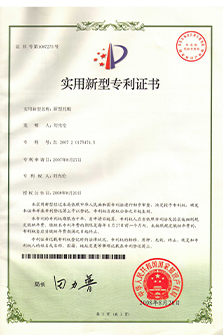 Afrikaans
Afrikaans  Albanian
Albanian  Amharic
Amharic  Arabic
Arabic  Armenian
Armenian  Azerbaijani
Azerbaijani  Basque
Basque  Belarusian
Belarusian  Bengali
Bengali  Bosnian
Bosnian  Bulgarian
Bulgarian  Catalan
Catalan  Cebuano
Cebuano  Corsican
Corsican  Croatian
Croatian  Czech
Czech  Danish
Danish  Dutch
Dutch  English
English  Esperanto
Esperanto  Estonian
Estonian  Finnish
Finnish  French
French  Frisian
Frisian  Galician
Galician  Georgian
Georgian  German
German  Greek
Greek  Gujarati
Gujarati  Haitian Creole
Haitian Creole  hausa
hausa  hawaiian
hawaiian  Hebrew
Hebrew  Hindi
Hindi  Miao
Miao  Hungarian
Hungarian  Icelandic
Icelandic  igbo
igbo  Indonesian
Indonesian  irish
irish  Italian
Italian  Japanese
Japanese  Javanese
Javanese  Kannada
Kannada  kazakh
kazakh  Khmer
Khmer  Rwandese
Rwandese  Korean
Korean  Kurdish
Kurdish  Kyrgyz
Kyrgyz  Lao
Lao  Latin
Latin  Latvian
Latvian  Lithuanian
Lithuanian  Luxembourgish
Luxembourgish  Macedonian
Macedonian  Malgashi
Malgashi  Malay
Malay  Malayalam
Malayalam  Maltese
Maltese  Maori
Maori  Marathi
Marathi  Mongolian
Mongolian  Myanmar
Myanmar  Nepali
Nepali  Norwegian
Norwegian  Norwegian
Norwegian  Occitan
Occitan  Pashto
Pashto  Persian
Persian  Polish
Polish  Portuguese
Portuguese  Punjabi
Punjabi  Romanian
Romanian  Russian
Russian  Samoan
Samoan  Scottish Gaelic
Scottish Gaelic  Serbian
Serbian  Sesotho
Sesotho  Shona
Shona  Sindhi
Sindhi  Sinhala
Sinhala  Slovak
Slovak  Slovenian
Slovenian  Somali
Somali  Spanish
Spanish  Sundanese
Sundanese  Swahili
Swahili  Swedish
Swedish  Tagalog
Tagalog  Tajik
Tajik  Tamil
Tamil  Tatar
Tatar  Telugu
Telugu  Thai
Thai  Turkish
Turkish  Turkmen
Turkmen  Ukrainian
Ukrainian  Urdu
Urdu  Uighur
Uighur  Uzbek
Uzbek  Vietnamese
Vietnamese  Welsh
Welsh  Bantu
Bantu  Yiddish
Yiddish  Yoruba
Yoruba  Zulu
Zulu tail pulley
Understanding Tail Pulleys An Essential Component in Conveyor Systems
Tail pulleys are critical components in conveyor systems, playing a vital role in enhancing operational efficiency and ensuring the smooth transportation of materials. Found at the end of conveyor belts, these pulleys contribute to the overall functionality and stability of the conveyor system. Understanding their design, function, and maintenance is essential for anyone involved in material handling or industrial operations.
Functionality of Tail Pulleys
The primary purpose of a tail pulley is to provide tension to the conveyor belt. By being positioned at the return section of the conveyor line, it helps in controlling the belt's slack and preventing any undesired sagging. As the belt travels over the tail pulley, it transitions smoothly, thereby reducing wear and tear and extending the lifespan of the conveyor system.
Apart from maintaining tension, tail pulleys also play a role in redirecting the return side of the conveyor belt. This redirection is crucial for ensuring that the belt can return to its original position without obstruction, allowing for continuous and efficient operation. In addition, tail pulleys are designed to handle various load conditions, adapting to the demands of the material being transferred.
Design Features
Tail pulleys come in various designs, depending on the specific requirements of the conveyor system. These designs may include drum-style pulleys, which are commonly used for their simplicity and efficiency. Other designs may involve crowned pulleys that help in aligning the belt and reducing misalignment problems.
tail pulley

Materials used in the construction of tail pulleys are also significant
. They are typically made from robust materials such as steel or other durable composites to withstand the heavy loads and harsh environments in which conveyors operate. Moreover, surface treatments may be applied to enhance their resistance to corrosion, further extending their lifespan.Maintenance and Care
Regular maintenance of tail pulleys is essential for ensuring the longevity and efficiency of the conveyor system. This includes routine inspections to check for signs of wear, damage, or misalignment. Proper tensioning is crucial, as incorrect tension can lead to premature wear of the conveyor belt and other components.
Lubrication is another aspect of maintenance that should not be overlooked. Bearings and moving parts within the tail pulley assembly need adequate lubrication to function optimally, reducing friction and the risk of overheating.
Conclusion
In conclusion, tail pulleys are indispensable in the functioning of conveyor systems. Their role in maintaining belt tension and facilitating smooth material transfer cannot be overstated. By understanding the importance of tail pulleys, industry professionals can ensure that their conveyor systems operate efficiently and reliably. Proper design, maintenance, and care of these components are vital for sustaining operational productivity and minimizing downtime, ultimately contributing to the success of material handling operations in various industries.
-
Trusted Conveyor Solutions from Leading Conveyor Idler Roller ManufacturersNewsJun.27,2025
-
Reliable Return Idler Solutions for Efficient Belt Conveyor SystemsNewsJun.27,2025
-
Precision Conveyor Accessories for Streamlined Material HandlingNewsJun.27,2025
-
High-Quality Belt Conveyor Idler Solutions for Efficient Material HandlingNewsJun.27,2025
-
High-Performance Belt Conveyor Pulleys for Reliable Material HandlingNewsJun.27,2025
-
Enhancing Material Handling EfficiencyNewsJun.27,2025





























